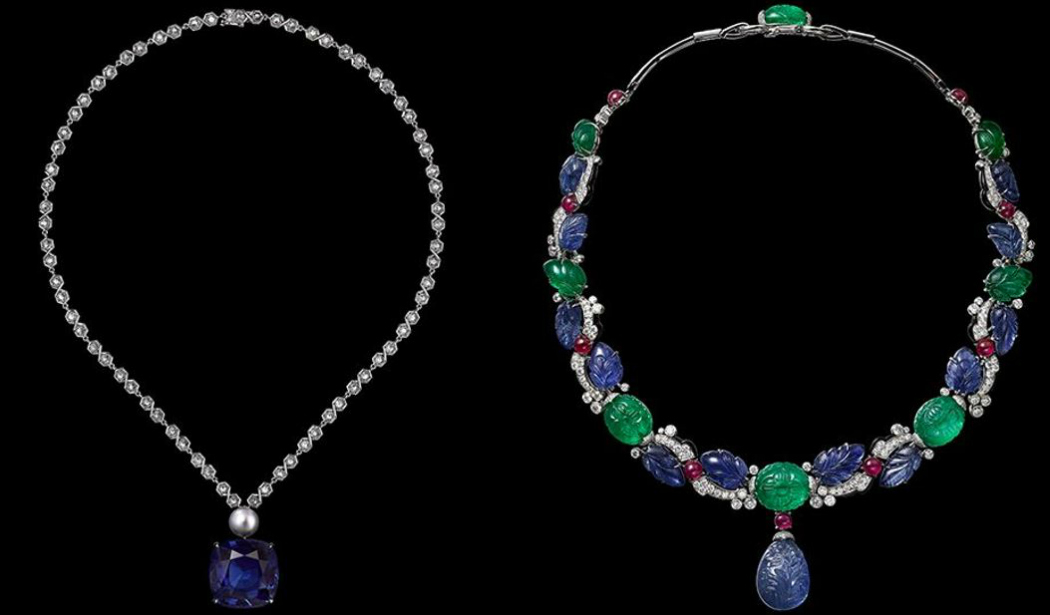Volumes and Colors for Etourdissant Cartier Exhibition

Last week in Singapore, Cartier presented the second part of its Etourdissant Cartier collection, first unveiled on the Riviera this summer. Consisting of 60 new pieces, the collection is an homage to the jeweler’s love affair with color as well as an exploration in volume.
Coral, Ethiopian and Australian opals, topazes, emerald, rubies, sculptured morganite, amethysts and turquoise, tourmaline de Paraiba, tanzanites, and milky green chrysoprase, the collection is a roll-call of precious and semi-precious stones, with a few very large rocks to satisfy any difficult magpies.
For example, the Adaman necklace features a rare 44.47-carat cushion-shaped Burmese sapphire that Cartier believes was likely extracted from the legendary Mogok mines and this central stone is held in place by a rare natural 20.40-grain button pearl; while the Romanov diamond cuff sports a 197.80-carat cushion-shaped Ceylon sapphire that used to be worn by the Tsarina Maria Feodorovna.
Linking the collection to Cartier’s colorful past is the stunning tutti-frutti Aga necklace. First created in the 1920s, the Tutti Frutti style, which mixed sapphires, emeralds, and rubies, has become one of the French jeweler’s most iconic designs. The tri-color combination of precious stones carved into floral shapes in the Indian tradition was daring for the time and the style has endured over the last century. Cartier’s latest iteration uses onyx to underline the stones and create an additional volume and depth, while providing a technical masterpiece that can be worn in three different ways with the four carved center stones being removable.
Since last Friday, the French jeweler has been presenting the high jewelry, haute horlogeries, and precious object d’art collection to its top international clientele in private viewings, but it is opening the doors of this dazzling exhibition at the Singapore Pinacothèque de Paris to the general public on October 31.
Beyond the new collection, the exhibition is an opportunity to see the craftsmanship of the Maison that continues to revive ancient techniques and contemporize them. For example, the Diamas platinum and diamonds bracelet is a revival of the métier d’art of diamond threading. Here a myriad of briolettes are strung onto specially-developed threads, freeing the stones from a traditional setting and thus allowing them to come to life.
T
he Cisela necklace features the ancient decorative technique of gold chasing, which was first found on the bronzes of classical Greece where it was used to create a relief pattern on metal. Unlike engraving, chasing does not remove any of the material — instead, using a punch or small hammer, the artisan changes the shape of the metal. The metal must thus be sufficiently malleable to be worked without the application of heat, which is why Cartier has chosen to use softer 20-carat gold instead of 18-carat gold. This necklace was inspired by brooches that were commissioned from the Maison in the 1920s and 1930s.
Amongst these ‘etourdissante’ or dazzling pieces, don’t miss the transformable Etourdissant platinum necklace which features a central 34.96-carat, D-color internally flawless diamond with two rows of assertive geometrical diamond lines formed with platinum beams that can be removed to wear the necklace differently.
as first published on BlouinArtinfo.com




